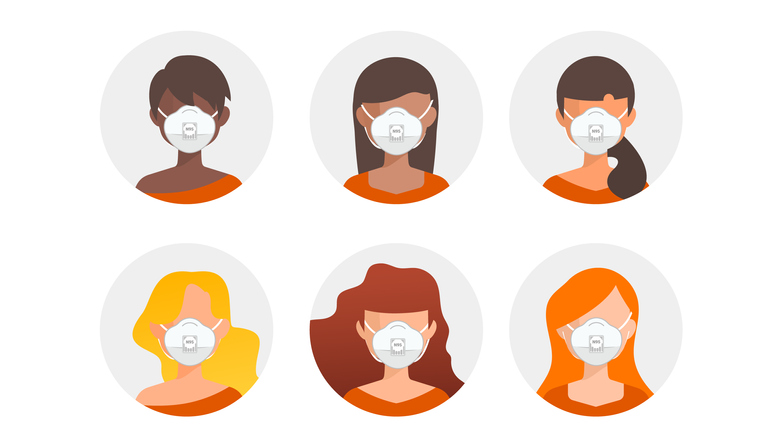
Long before the current pandemic, the likelihood that an individual would experience positive or negative health outcomes could vary greatly depending on his or her education, income level, environment, and other social determinants of health (SDoH). In addition, historically, certain minority races and ethnic groups suffer health inequities leading to poorer health and health outcomes – a point that has been underscored since the emergence of Covid-19.
Medical care is estimated to account for only 10 to 20% of healthcare outcomes, which is one reason healthcare leaders seeking to deliver high quality care must consider other elements impacting patient health including income, racial discrimination, access to healthcare, dietary intake, and adequate medication.
Consider, for example, diabetes, which impacts Blacks, Hispanics, and Native Americans at higher rates than white populations. Known risk factors for diabetes include certain SDoH, such as limited access to healthy foods, barriers to physical activity, high stress levels, and social isolation. By understanding the clinical, economic, and social factors impacting a patient’s health, clinicians are better positioned to identify at-risk patients and take early action to mitigate disease complications.
The challenge of identifying SDoH
While SDoH can provide a wealth of information about non-clinical factors impacting a patient’s overall well-being, identifying a patient’s SDoH can be challenging because the details aren’t always easily accessible, especially when clinicians are making important treatment decisions. SDoH data often reside in EHRs but are essentially trapped as unstructured text within clinical notes, patient-reported data, secure email exchanges, patient portal messages and telehealth transcripts. In fact, an estimated 80% of clinical data is stored in an unstructured format that is difficult to search and access. As a result, clinicians are often unaware of key SDoH details that impact decision-making and patient outcomes.
To unlock insights from unstructured data and improve patient care, healthcare organizations can leverage the power of AI-based technologies, such as natural language processing (NLP). With NLP, providers can eliminate manual and time-consuming chart reviews to find critical patient information. Large volumes of unstructured clinical information can be automatically reviewed to identify and extract key concepts, including specific SDoH details. Such tools can be particularly powerful when combined with structured data to create a more complete 360-degree view of patients.
The disproportional impact of Covid-19
Consider how Covid-19 has disproportionally impacted populations already suffering health inequities. Lower-income individuals, people of color, and those without ready-access to healthcare have suffered greater rates of Covid-19 infections, complications, and death. In fact, findings published in the NEJM Catalyst Innovations in Care Delivery show that groups who are socially disadvantaged because of race/ethnicity, social position, and/or economic status have an increased risk of exposure to the virus that causes the disease and are more likely to have impaired immune systems that could lead to worse health outcomes.

Improving the Healthcare Financial Experience to Help Care Flow
Zelis CEO Amanda Eisel shares her perspective on how the company is solving the problems of a fragmented health financial system to benefit all.
Researchers note that Covid-19 infections in predominately black counties across the country are threefold higher and mortality rates are sixfold higher, compared to predominately white counties. And in New York City, mortality rates for African Americans and Latinos diagnosed with Covid-19 are 1.6 to 2 times higher than those of whites.
In addition, certain populations are at increased risk of Covid-19 exposure, including those whose employment prevents them from working from home, who rely on public transportation, who depend on childcare outside the home, and who live in larger households. Economically disadvantaged groups are at higher risk because they are less likely to have a primary care provider, medical home, or regular access to care, which may limit access to Covid-19 testing and treatment.
Reducing health inequities with technology
Though a clinician can easily search structured data in EHRs to identify a patient’s weight, race, and age, critical SDoH risk factors are often less obvious because they are usually noted as free text in a chart note, perhaps mentioned only once in a single encounter long ago. Even the most conscious physician may overlook the red flags that suggest patients are at higher risk of infection, such as those living or working in crowded conditions where social distancing is difficult, or lacking access to personal protective equipment at work, or living in an area with high levels of pollution – which is associated with higher Covid-19 mortality rates.
To reduce the systemic health inequities that have put so many individuals at higher risk of getting sick and dying from Covid-19, healthcare organizations must leverage advanced technologies such as NLP to identify SDoH and other critical information from unstructured notes. Using such tools, organizations can more accurately and efficiently assess high-risk patients. Providers can then take proactive measures to connect patients with additional resources, such as financial assistance for medication, educational materials on infection control, or health screenings to identify underlying health conditions that could promise outcomes, should a patient contract Covid-19.
All of us look forward to the day when the current health crisis is behind us. With the right technologies, healthcare leaders can also take action to put an end to health inequities and advance better patient care and outcomes for all.
Photo: Irina Shatilova, Getty Images
Elizabeth Marshall, MD, MBA, is Associate Director, Clinical Analytics at Linguamatics, an IQVIA company. Marshall completed her fellowship training in informatics at the Medical University of South Carolina and served as an assistant professor and clinical manager for a study focused on decreasing veteran suicidality. She served in the United States Air Force, then later became a research physician dedicated to the development of informatics solutions to improve the effectiveness of mental health treatments for military veterans. In honor of her work advancing the treatment of suicidality and PTSD for veterans while a clinical research health scientist at the Ralph H. Johnson Veterans Administration Medical Center, she was awarded the Research Training Institute Scholar Award from the ICRC-S Injury Control Research Center for Suicide Prevention (2013).
This post appears through the MedCity Influencers program. Anyone can publish their perspective on business and innovation in healthcare on MedCity News through MedCity Influencers. Click here to find out how.










